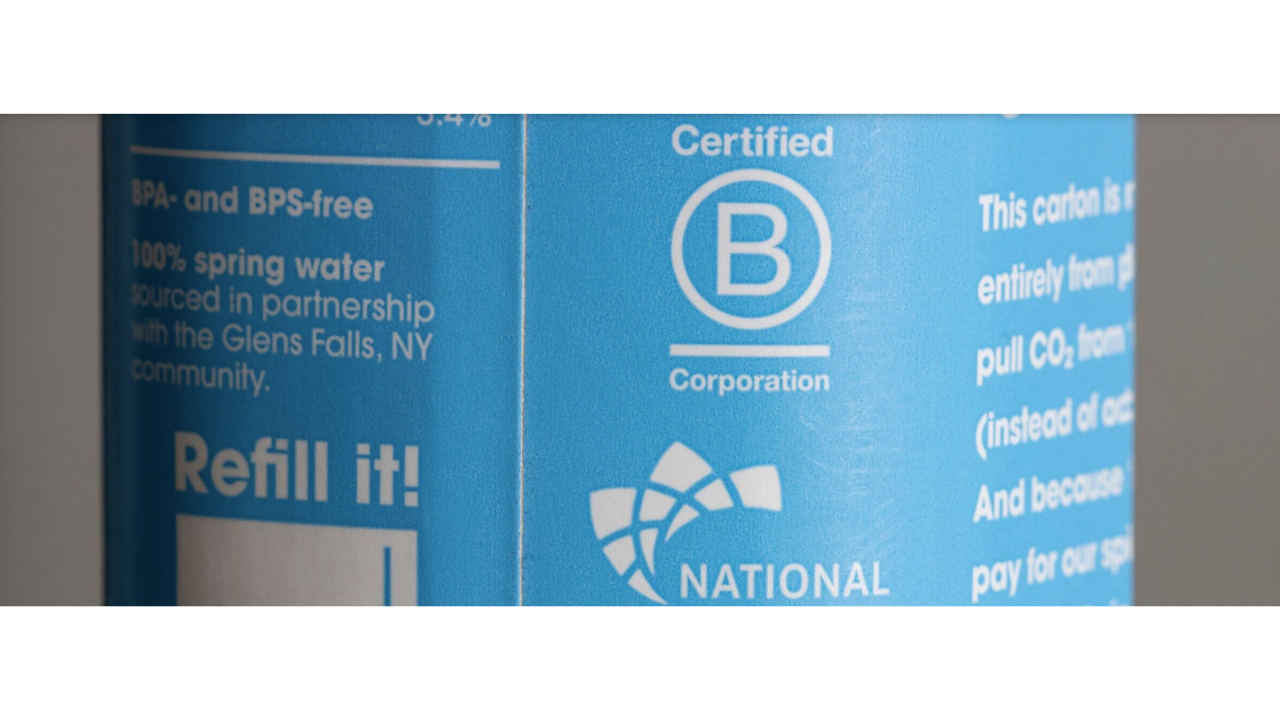The Real ROI of Business Sustainability

Oftentimes when discussing return on investment, companies and organizations are strictly looking at dollars and cents. However, in this new era of business, more leaders are understanding that the impact of their operations goes far beyond finances. And when looking at significant undertakings to improve a company’s sustainability efforts, the impact is much bigger than the company’s bottom line.
Jessica Yinka Thomas, Poole College’s Director of Business Sustainability Collaborative and assistant professor of the practice, has spent years working domestically and internationally in sustainable enterprise, social innovation and business development. She currently serves on the B Lab standards advisory council – the global governing body responsible for revisions to the B Impact Assessment standards and as president of B Academics – a global network of educators and researchers studying B Corps.
Thomas shares her insight into why it’s important for companies to share their sustainability efforts, how they can measure the impact of those efforts and more.
Why is it important for companies to show the impact of their sustainability efforts?
JYT: Research continues to show that sustainability drives profitability. Companies would be wise to consider their sustainability strategies when thinking about engaging their stakeholders – both internal and external. Looking at customers, for example, 81%of global consumers believe that businesses must play a role in addressing societal issues and 73% of consumers would switch brands if a different brand of similar quality supported a good cause. Sustainability builds customer loyalty. And from an employee recruitment and retention perspective, 86% of employees believe it’s important for their own employer to be responsible to society and the environment – with 55% stating it’s very important.
There’s a huge benefit from an investor standpoint. In fact, Larry Fink, CEO of Blackrock Investments, which has over $7 trillion in assets under investment, has written a letter to CEOs over the last several years stating that his company will use sustainability as one lens through which to evaluate potential investment decisions. He says it’s crucial that businesses make “a positive contribution to society” – and that he planned to hold them to account. In another letter, Fink said, “A company cannot achieve long-term profits without embracing purpose and considering the needs of a broad range of stakeholders – purpose is the engine of long-term profitability.”
What other benefits do companies recognize due to their investment in sustainability?
JYT: In a review by Oxford University and Arabesque Partners of 200 studies on sustainability and corporate performance, 88% showed that good environmental, social and governance practices resulted in better operational performance and 80% showed that stock performance is positively correlated with good sustainability practices.
How has the perception of sustainability from a corporate standpoint evolved over time?
JYT: It’s no longer enough for companies to put in energy efficient lighting and post a statement about the Black Lives Matter movement on social media. Companies must consistently embed sustainability across their business to demonstrate their ongoing commitment to positive impact – whether that’s reducing their environmental footprint or implementing equitable education initiatives.
How can companies measure their sustainability efforts in order to demonstrate those commitments to their stakeholders?
JYT: For the last decade, I’ve studied and taught about B Corps and the B Impact Assessment (BIA). The BIA includes hundreds of questions that help companies to measure their sustainability efforts. For example, in areas of governance, accountability and transparency, we can see if companies report annually on their impact metrics and if they embed their sustainability commitment into their mission statement. From an environmental perspective, companies can measure their energy and water efficiency and their investment in renewable energy. Or if you’re looking at sustainability efforts in terms of employment, companies can measure the pay ratios from their lowest to highest-paid employees, the diversity of their leadership team, or even the company’s opportunities for advancement.
I would assume a lot of people automatically think about the environment when they think about sustainability. How do social issues fit into the sustainability conversation as well?
JYT: Environmental issues are important because of their impact on individual’s health and well-being. Additionally, we know that communities of color and lower-income communities are disproportionately impacted by environmental issues such as pollution and climate change. Environment and social issues are largely connected. Therefore, it’s not enough that businesses just address environmental issues – there’s a huge social component as well.
A huge part of the business sustainability movement is focused on the impact of the business on their communities. How do companies engage in sustainability efforts centered around the community?
JYT: We see companies partnering with nonprofits and community organizations to improve the lives of people in the community in which they operate. Others commit to working with local suppliers or minority-owned suppliers. Others may offer paid time off for employees to volunteer at local nonprofit. Take Bombas, for example. Over the last seven years, the company has donated 50 million items – socks, underwear and shirts – to homeless shelters. There are lots of ways for companies to serve their community.
Not all companies have products or services that directly address issues of health, environment or well-being. How do those companies ensure their business contributes to the betterment of society?
JYT: Absolutely – every business can find ways to impact the world. Take Bombas, for example. Over the last seven years, the company has donated 50 million items – socks, underwear and shirts – to homeless shelters. We’ve worked on close to 80 projects with local and global companies to help them improve their impact through our B Corp Clinic student consulting program. We use the B Impact Assessment as a roadmap to strengthen their impact business model and contribute to making the world a better place. A few examples of companies we’ve worked with in the Clinic to certify and recertify as B Corps include:
- Counter Culture Coffee is focused on improving the company’s impact on people and the planet from paying a fair wage to suppliers to implementing an employee ownership model.
- TS Designs produces apparel “made in the USA from dirt to shirt” and is working to make their supply chain more sustainable including using more environmentally friendly and higher quality printing methods.
- Lulu Press, a print on demand publishing company, provides paid time off for their employees to volunteer with local nonprofits among other community and stakeholder engagement strategies.
- … and many others.
Are there industry sustainability reporting standards for companies to follow?
JYT: Yes – there are many of them! I think the B Impact Assessment is the most rigorous, transparent, comprehensive and engaging reporting standard out there. The BIA adapts to a company’s size, geographic location and industry. It’s revised every three years based on input from the B Corp community. And it allows companies to communicate their sustainability efforts to customers, employees, investors and community members. But the BIA certainly isn’t the only reporting standard. The Global Reporting Initiative measures corporate impacts – usually large, multinational companies – on the economy, environment and people. The United Nations also released 17 Sustainable Development Goals (SDGs) in 2015, and a lot of companies report how their business model addresses some of these goals. What’s exciting is that a lot of these standards are being mapped to one another, creating some really great collaborations between these reporting organizations.
Are there any sustainability metrics that companies typically don’t measure but should?
JYT: It’s much more challenging to measure social impact than it is to measure environmental impact, however organizations like the B Lab are creating a great roadmap to help businesses think strategically about how to measure social as well as environmental impacts. And I expect to see more and more companies continue to incorporate these sustainability practices into their business operations not only because it’s the right thing to do, but also because at the end, it makes their business more profitable.
Originally posted by: Caroline Barnhill | November 29, 2021 | Poole Thought Leadership
- Categories:


